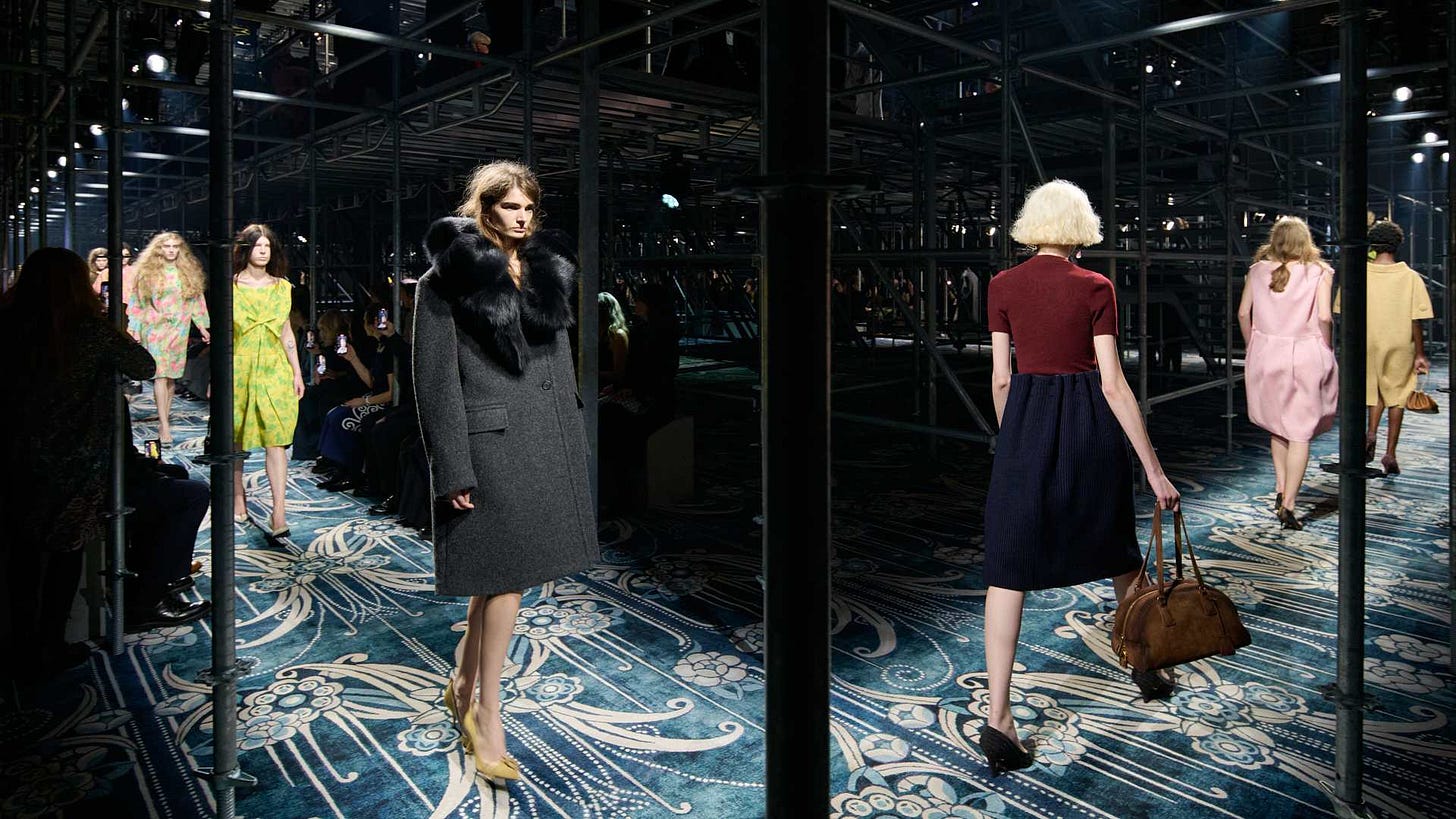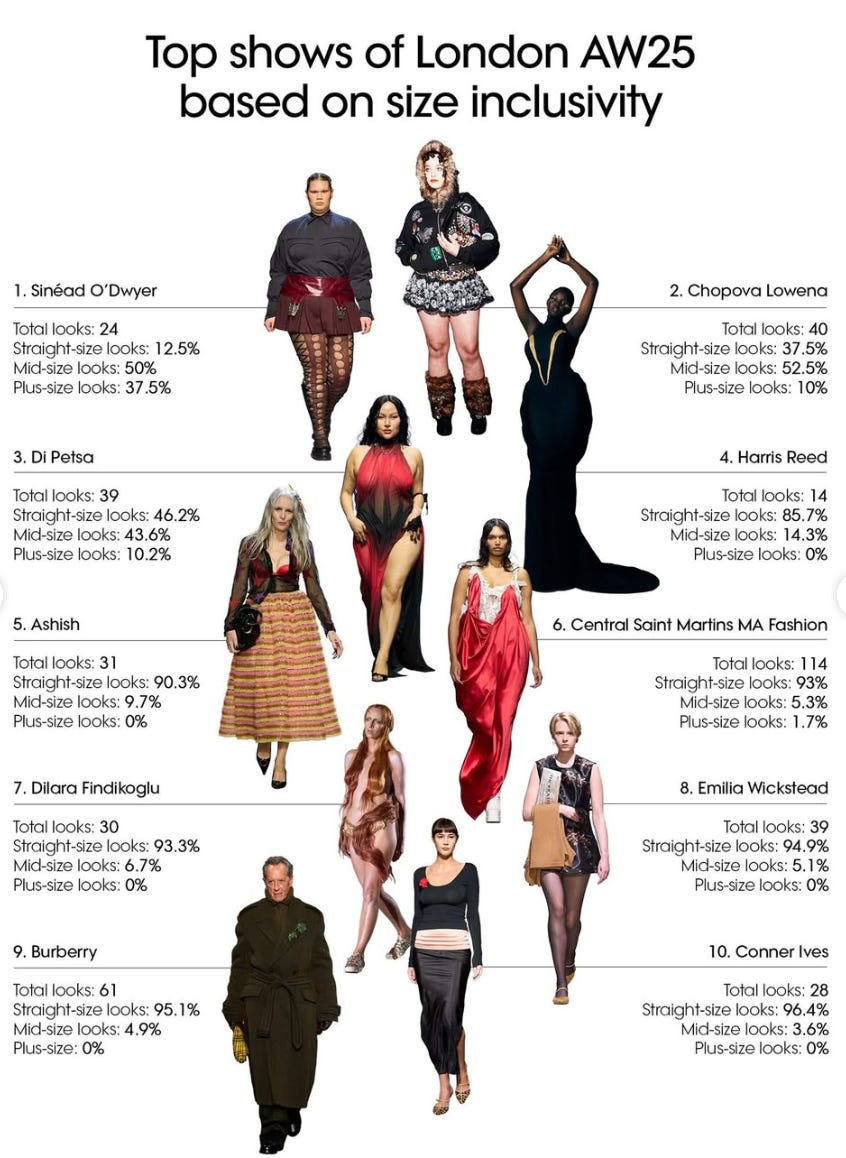I was not in most of the rooms where the fashions unfolded over this past show season, where the global fashion flotsam shimmied across two continents to look at what clothes you might like to wear next winter. But then, increasingly, neither was the majority of the audience watching on. A lot has been made of the EMV (earned media value - or how many eyes across the internet were watching) of fashion week.
Paris, where all the biggest brands show, unsurprisingly makes the most impact. London, where designers cobble together collections from tiny studios, the least. If this is a useful measure for marketing impact (which is really what these shows are for now) then perhaps it matters less who is actually in the audience. Depending on the size of your ego, I suppose.
Predictably, as reported this week by Vogue Business and Felicity Hayward’s Including the Curve, the size of the bodies on the catwalk has receded back to its core values, ie sample size or the oft touted size zero (a UK 4). Below are their respective figures showing the decreasing of size diversity over the past four years.
The clothes shown, as I wrote at the start of fashion month, might play around with proportion and shape, with exaggerated hips and tits, but the body beneath must remain small and restricted. The silhouette is imposed rather than respected. It is the clothes which dictate how a woman’s body should be, rather than take note of what the woman is and design around that.
Nowhere was this more pronounced than at Duran Lantink where bouncing breasts were a comedy bit crop top, a silicon prosthetic worn by a male model.
It reminded me of the Beer episode of Blackadder II, which also features Miriam Margoyles and a turnip shaped like a thingy. Tbf if that was Lantink’s inspiration, then all respect to the lad.
The only lean towards more inclusive casting is not for size but to tap into that EMV. Celebrities are the new curve stunt, booking screen legends the surest flex for viral cultural relevance. Jason Isaacs, Sarah Paulson, Richard E Grant, Lesley Manville, Florence Pugh, Fiona Shaw, Andrea Riseborough added thespian frisson and allowed designers to tick somewhat of a body diversity box in place of just casting a non sample size model. You will note that they are all white.
Beyond the conviction to depict women’s bodies in their tiniest, least fleshy, most angular iteration, there are growing anecdotal reports of falling diversity in terms of ethnicity. This data, which was once collected to track the inclusion of non-white models in the industry, has been abandoned. Presumably everyone thought fashion fixed its racism issues.
As DEI initiatives are being not so quietly dumped across other industries, fashion seems to be on trend there, too, aligned with the reinvigorated Trumpian, narrow and conservative world vision.
Retro designs harking back to the 1950s and the show-off luxury of fur (faux - fur production has been banned in many countries, Amy Odell wrote a great piece on the reality of the declining fur industry, offering clear receipts to the “fur is back” hyperbole) point to a hardening of stereotypical “feminine” aesthetic tropes. Trad is really taking off.
To read the rest you’ll need to upgrade to become a EiC Contributing Editor with a PAID subscription which gives you access to the entire archive as well as all paywalled editions and the knowledge that you are Making Content Great Again!















